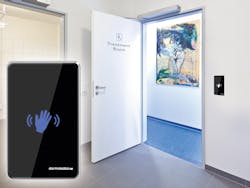In an era when large-scale in-person trade events have all but disappeared, how can manufacturers launch products successfully? Although the challenge of social distancing during the COVID-19 pandemic can’t be overcome fully, smart companies are applying the same level of ingenuity that they used to develop their product innovations in the first place — by thinking differently about creating buzz for their solutions that solve their customers’ problems.
There are three basic steps.
Step 1: Think logistics, not statistics
Study the operational and communications weaknesses of your customers first. What’s changed with them since you last connected? How do they have to receive information from you? Are your key and target customers reliant on technology from home to navigate their workday? How has their ability to collaborate changed? Typical product launches focus on citing relevant features and benefits, but in today’s atypical work environment, the customer’s daily work experience can be a barrier. Data cited versus that experienced can get lost.
Then, reposition your marketing messages as learning opportunities, to help customers stay informed about the industry and your products through livestream or recorded self-paced events.
- Schedule a livestream reveal that features company leaders, subject matter experts and partners. Host it on YouTube or a similar platform and promote the event via email. Give customers a chance to interact “on set” through virtual engagement.
- Audit your showroom and production facilities. Can they be used for more-personalized in-person brand experience visits when possible? How can they be used virtually to replicate an in-person experience with your products?
- Sponsor free, self-paced educational courses. Although this takes effort to ensure that content integrity and formatting meets or exceeds industry standards for continuing-education units, it’s well worth it. Develop courses on industry topics that enable professionals to gain knowledge and earn credits through a recognized platform.
Step 2: Free problem-solving live
Create live or almost-live events that allow customers, prospects and partners to engage with you directly. Enhance the “screen time” with demos and action-oriented content that answers “How?” and “Why?” questions in addition to simply stating “What’s” happening. Consider an approach that’s focused on what customers have to know about how your new products help them to improve their daily operations — even if they can’t make immediate purchase decisions — and what seeds you can plant for longer term planning. What information do you have that can solve some of your customers’ problems or get them to think about your products in a new way?
- Create a video or podcast series. Allow subject-matter experts to present short, actionable videos or podcasts that provide helpful tips to partners, customers and prospects in an entertaining way. This provides “snackable” content for customers and showcases the expertise of your team.
- Host “open mic” days and tech talks. Schedule live webinars on interesting industry topics, including an opportunity to meet leaders in a virtual-learning setting. For example, how can door hardware products — some of the most touched surfaces in any building — remain safe and clean? What are the advantages of antimicrobial finishes and touchless options to promote healthy environments? Allow time for questions from the audience and open discussion to make it a more personalized session. Promote the webinars through email and social media. Our dormakaba Open Mic Mondays have become a popular weekly stop for much of our audience.
Step 3: Adapt, Adapt, Adapt
Now is the time to experiment with new technology to create as close to an “in-person” experience as possible.
- Gamify your marketing. So-called gamification tools encourage engagement with products and services in a simple, mobile-friendly learning platform. Players can learn on the go, on demand and in seconds. Our new dormakaba gamification tool, for example, allows you to test your knowledge of our brands, products and market applications. It also connects products with each other and can be used to help customers to solve problems.
- Launch AR and VR technology. Virtual reality (VR) is new and can be cost-prohibitive, but it’s emerging as a desirable option to create close-to-in-person engagement. Identify which of your products require that type of experience and work to develop an augmented-reality (AR) or VR presentation that captures their attention and showcases your best-of-the-best innovations.
New products always are in the pipeline for most manufacturers, because innovation doesn’t stand still. Ensure that your new products receive the attention they deserve regardless of the times. Reimagine product rollouts with creative technology integrations that provide close-up experiences. You have a good story to tell — showcase it!
Jillian Delaney is assistant vice president, brand and marketing communications at dormakaba Americas. She can be reached at [email protected].
